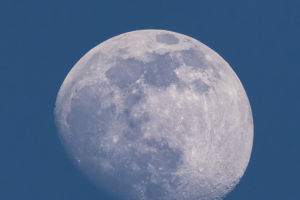Mount Everest stands as the towering pinnacle of our world, nestled in the heart of the Himalayas at the confluence of Nepal and China's Tibet Autonomous Region.
It commands universal respect as one of the most audacious climbing objectives, drawing adventurers from every corner of the globe, all eager to push their boundaries to the limit.
Here are some pivotal details about Mount Everest:
1. Altitude: The precise elevation of Mount Everest fluctuates depending on diverse measurements and data sources, but it's universally recognized to hover around 8,848.86 meters (29,031.7 feet).
This figure is in a perpetual state of adjustment, subject to the subtle shifts in mountain heights brought about by geological dynamics.
2. Pioneering Summit: The triumphant first ascent of Mount Everest occurred on May 29, 1953, a feat achieved jointly by New Zealand's intrepid mountaineer, Edmund Hillary, and the tenacious Nepalese climber, Tenzing Norgay.
3. Mountaineering Feat: Scaling the summit of Mount Everest constitutes a Herculean undertaking, demanding superlative physical fitness, mountaineering prowess, the capacity to adapt to the rarefied atmosphere of high altitudes, and cohesive teamwork.
Climbers must devote extensive periods to preparation and training to tackle the extremes of climate, oxygen dearth, and other perils.
4. Climbing periods: The best times to ascend Mount Everest are typically during spring (April-May) and autumn (September-October). These periods offer relatively stable weather conditions and reduced risks, making them optimal for climbers.
5. Cultural Significance: Mount Everest transcends its status as a mere geological marvel, brimming with cultural and spiritual import. For the people of Nepal and Tibet, it occupies the realm of the sacred.
By and large, Mount Everest represents a world-class marvel of nature, a beacon of human valor, and a beacon that lures countless explorers and climbers, propelling them to embrace the allure of challenge and exploration.
The formidable ascent of Mount Everest presents climbers with a series of daunting obstacles, including:
1. Adverse Climate and Oxygen Scarcity: As climbers ascend Mount Everest, they grapple with the unforgiving rigors of the elements, battling against bone-chilling temperatures, ferocious winds, snowstorms, and hail.
Furthermore, at these extraordinary heights, the tenuous atmosphere severely diminishes oxygen content, necessitating acclimatization and increasing the risk of high-altitude afflictions such as altitude sickness.
2. Technical Trials: Conquering Mount Everest mandates an advanced skill set in mountaineering, encompassing glacier traversals, rock face ascents, and cliff negotiations. Climbers must have the technical know-how and seasoned experience to tackle the treacherous terrain of the summit.
3. Provisioning and Gear: Climbers must tote a plethora of gear, including high-altitude attire, insulated jackets, durable pants, sturdy hiking boots, climbing tools, alpine tents, oxygen cylinders, sustenance, communication devices, and more.
Carrying these essentials demands a formidable combination of physical fortitude and efficient teamwork.
4. Mental Strain: Conquering Mount Everest poses a colossal mental challenge. Climbers must summon tremendous resilience and unwavering determination to confront the brutal conditions, the specter of failure, and the profound isolation intrinsic to the high-altitude environment.
In summation, the quest for the Mount Everest summit is a grand endeavor, demanding a myriad of skills, robust preparation, adaptability, and unwavering determination from the intrepid climber who undertakes this extraordinary journey.


